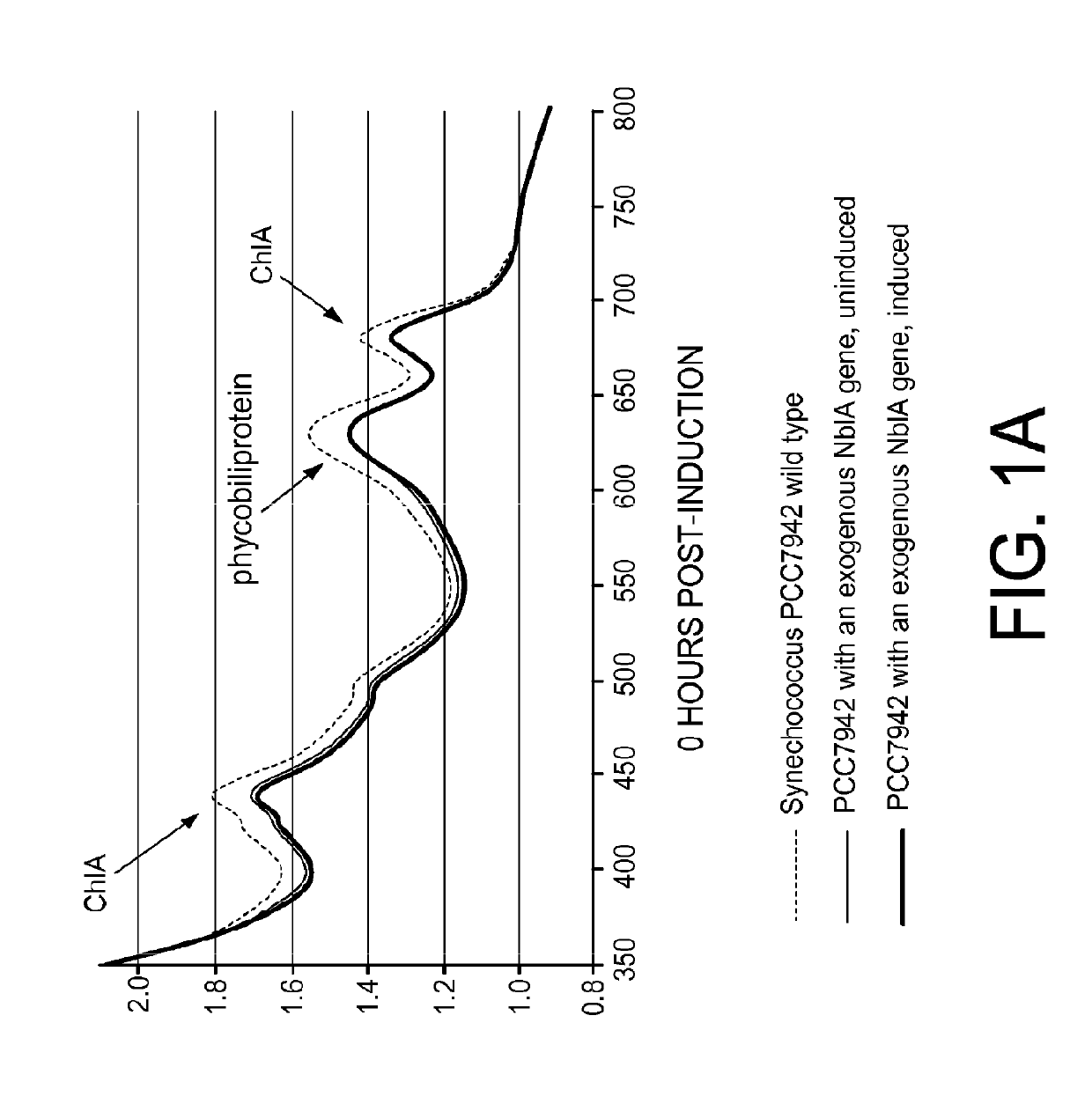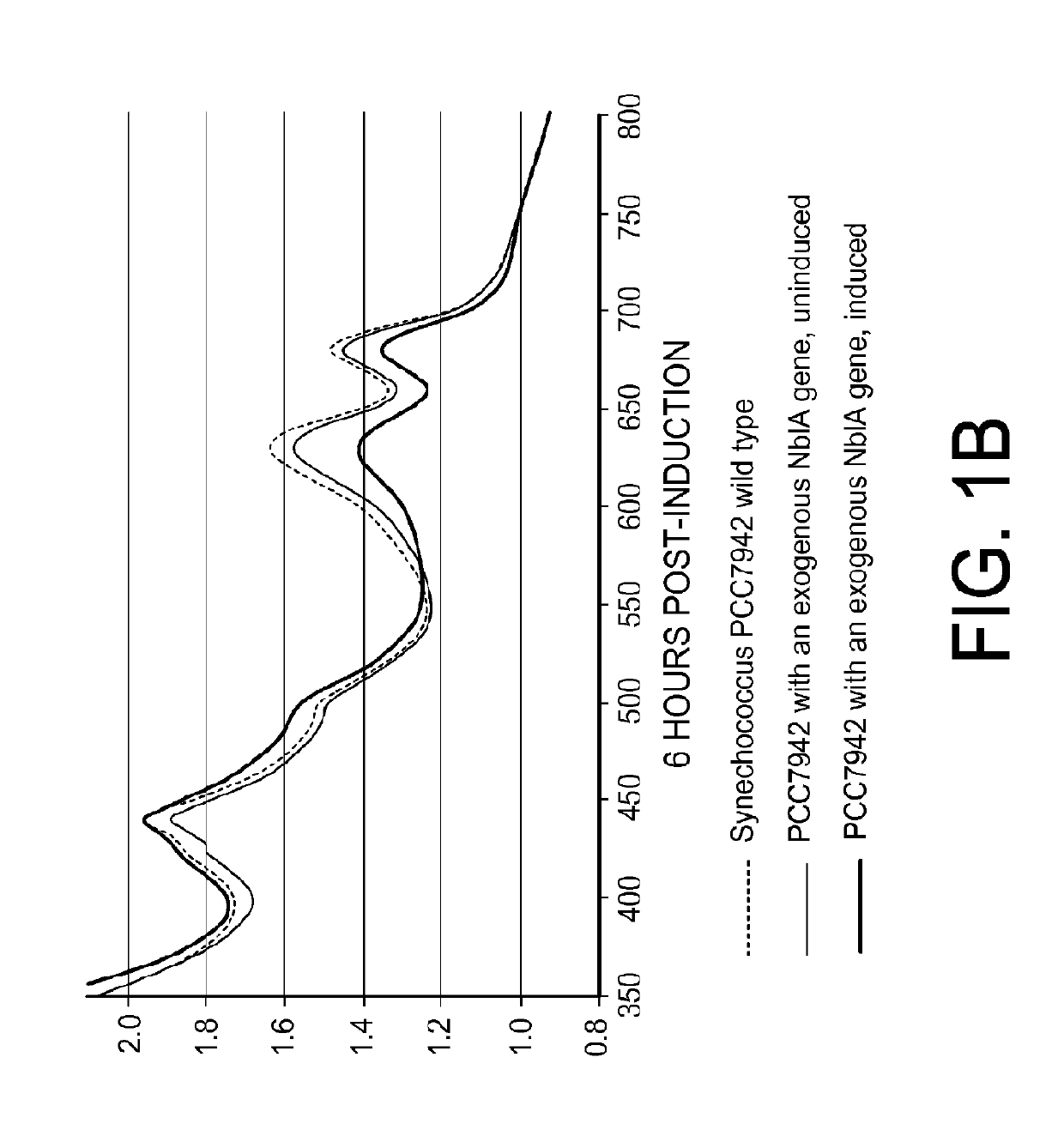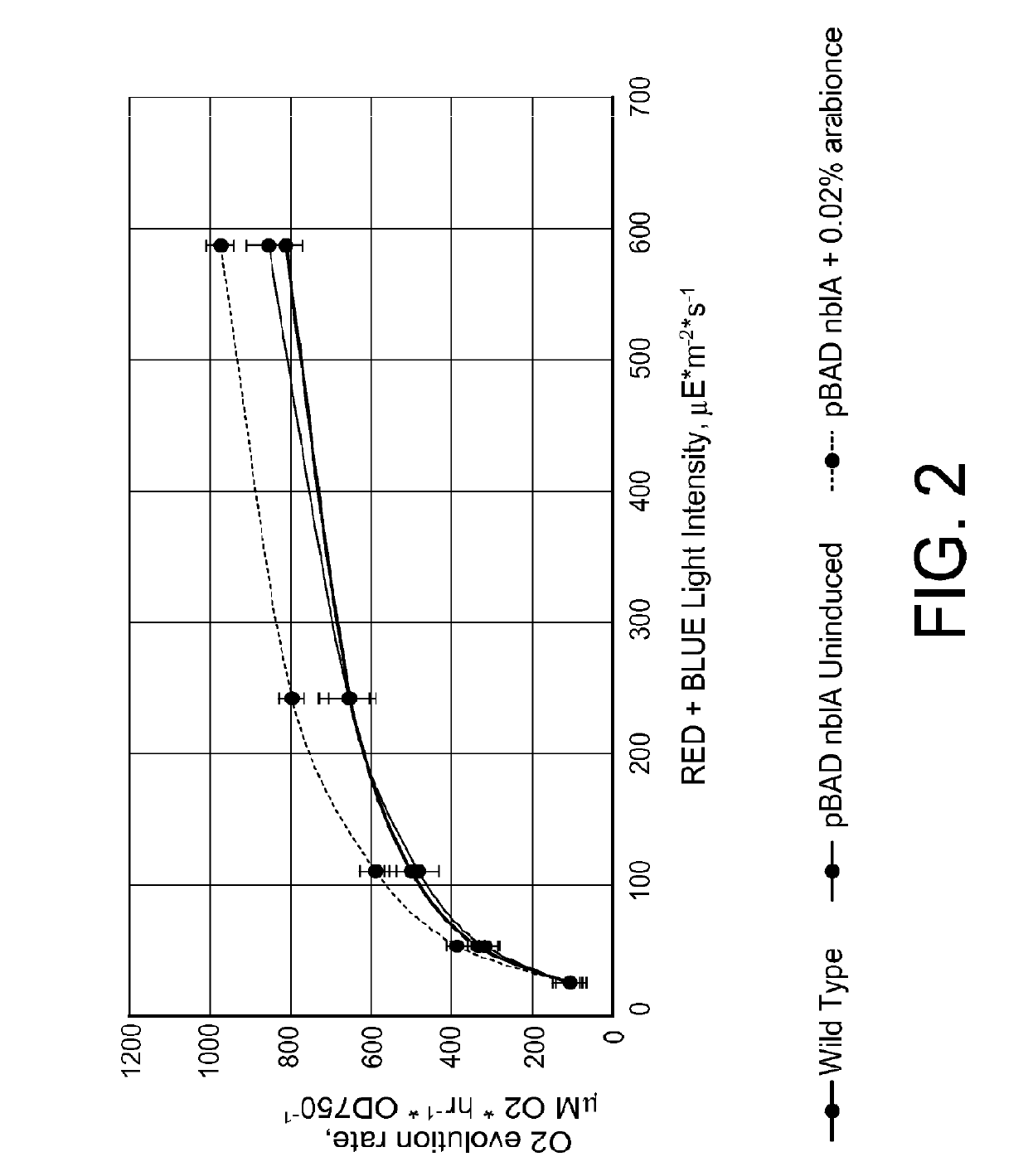Cyanobacteria having improved photosynthetic activity
a technology of cyanobacteria and photosynthetic activity, which is applied in the direction of bacteria peptides, biofuels, peptide sources, etc., can solve the problems of easy saturation of the capacity of algae to use light for photosynthesis, inability to readily genetically manipulate algae, etc., to reduce the expression increase photosynthetic activity, and reduce the amount of light harvesting proteins
- Summary
- Abstract
- Description
- Claims
- Application Information
AI Technical Summary
Benefits of technology
Problems solved by technology
Method used
Image
Examples
example 1
[0542]FIGS. 1A and 1B show a measurement of phycobilisomes, comparing wild-type to NblA overexpressor. Synechococcus PCC7942 wild type, PCC7942 with an exogenous NblA gene, uninduced or PCC7942 with an exogenous NblA gene, induced. Samples were collected at time zero (FIG. 1A) and at six hours (FIG. 1B) after induction of the NblA gene. Whole cells were examined by spectrophotometry, and absorbance as a function of wavelength was determined. The three major peaks represent absorption by chlorophyll A (at approximately 420 and 680 nm) and by phycobiliprotein (at approximately 630 nm). Induction of NblA caused a rapid decrease in light absorption by phycobiliprotein. Some reduction in the 680 nm chlorophyll A peak was also observed. These data show that phycobilisomes are reduced after modulated NblA expression, indicating that modulating NblA expression reduce phycobilisome abundance.
example 2
[0543]Normalized photosynthetic activities of suspensions of wild type and modified cyanobacteria containing an arabinose-induced over-expression system of the gene nblA. Triplicate cultures of wild-type Synechococcus sp. PCC 7942, pBAD nblA uninduced and pBAD nblA induced (with 0.02% arabinose added) were harvested in log-phase (between OD750 values of 0.4 and 0.6) and re-suspended in BG-11 medium with 20 mM Potassium Phosphate (pH 7.5) and 10 mM Sodium Bicarbonate additions. These suspensions were Illuminated with Red+Blue LEDs in a calibrated Walz Dual Pam 100 Fluorometer (Walz, Germany) to total light Intensities between 0 and 600 μE*m−2*s−1 and oxygen concentration was monitored by a NeoFox Oxygen Sensor (Ocean Optics, USA) continuously every second for 120 seconds at each light intensity. The slopes of the linear O2 production rate was then found and plotted above for each culture time (n=3 for each type).
[0544]As shown in FIG. 2, oxygen evolution rates of suspensions of cyano...
example 3
[0545]Cultures of a control strain (wild type Synechococcus sp. PCC7942) in the presence of 0.02% arabinose (which does not change optical characteristics in presence of arabinose), pBAD nblA, and pBAD nblA in the presence of 0.02% arabinose were grown in triplicate cultures at 30 degrees Celsius in photobloreactors (Phenometrics, USA), top lit with 2500 μE*m−2*s−1 incident white light LEDs with bubbling of 2% CO2 in air. The medium used was BG-11+10 mM sodium phosphate (pH 7.1)+5 μg / mL Kanamycin (which all strains had resistance markers for). Strains with overexpression of nblA by induction with arabinose grew better than both controls as measured by optical density (OD 750 nm) and dry weight (normalized to culture volume) as shown in FIGS. 4 A and B, respectively.
PUM
| Property | Measurement | Unit |
|---|---|---|
| time | aaaaa | aaaaa |
| pH | aaaaa | aaaaa |
| pH | aaaaa | aaaaa |
Abstract
Description
Claims
Application Information
 Login to View More
Login to View More - R&D Engineer
- R&D Manager
- IP Professional
- Industry Leading Data Capabilities
- Powerful AI technology
- Patent DNA Extraction
Browse by: Latest US Patents, China's latest patents, Technical Efficacy Thesaurus, Application Domain, Technology Topic, Popular Technical Reports.
© 2024 PatSnap. All rights reserved.Legal|Privacy policy|Modern Slavery Act Transparency Statement|Sitemap|About US| Contact US: help@patsnap.com










